icon
password
Multi-select
tags
ID
type
status
slug
summary
category
date
Author
URL
Lanzhou lamian, because of its presence in the streets of various cities in China, is jokingly referred to by Chinese netizens as one of the three mysterious organizations in the Chinese restaurant industry. In fact, the traditional food of Lanzhou is called "Lanzhou Beef Noodle", and there is an interesting evolution of why this Chinese fast food top stream is called "Lanzhou lamian".
Just as Western countries have burgers, sandwiches, fish and chips and many other world-renowned fast food, China also has its own unique Chinese fast food. The most well-known ones have to be Lanzhou lamian, braised chicken rice and Shaxian delicacies, and you can find them in almost all cities in China. Among them, Shaxian delicacies is a chain brand that sells specialty snacks from Shaxian, Fujian, such as flat pork, Shumai and Lo mein. While Lanzhou lamian and braised chicken rice are variously featured as staple products in different restaurants, like burgers are to McDonald’s and Burger King.
Because they are located almost everywhere in China, many Chinese netizens jokingly refer to them as the three mysterious organizations of the Chinese restaurant industry. They are like the ancient three kingdoms of Wei, Shu and Wu, and present a three-legged triumph in the Chinese fast food industry.
Among the three, Lanzhou lamian is again the most special. Many foreign friends and even Chinese people have the impression that Lanzhou lamian is a specialty of Lanzhou City in China’s Gansu Province, but in fact, most Lanzhou lamian restaurants in China are not owned by Lanzhou people.
In this article we will introduce you to Lanzhou lamian, a peculiar Chinese delicacy.
The past and present life
Lanzhou lamian, the main production process is evident from the word “La” in its name, which means stretch in Chinese – the chef cooks the dough by repeatedly stretching it to the desired thickness and shape and cooks it.
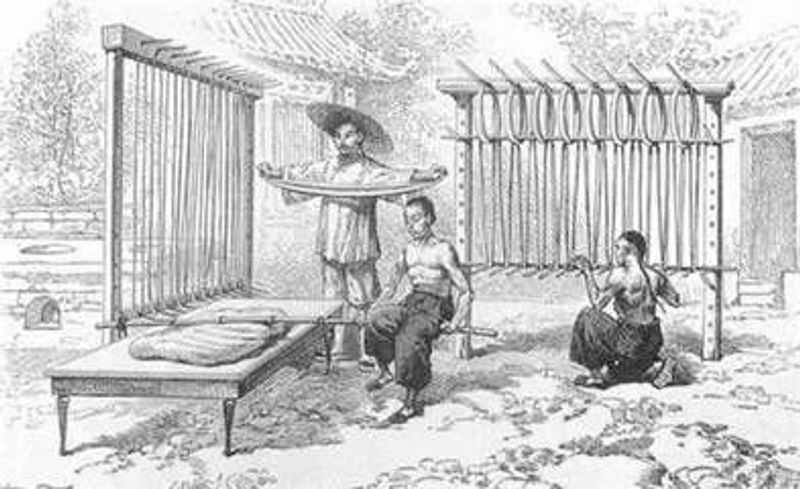
Lanzhou lamian also has a very long history, and is said to have first originated in the Tang Dynasty (618-907), but because it is so old there is no way to verify it.
According to locals, there is no Lanzhou lamian in Lanzhou, and the local specialty noodle dish is called Lanzhou beef noodle or Lanzhou beef noodle soup. The earliest Lanzhou clear-soup beef noodle evolved from the Lao Tang beef noodle from the Qinghua cart in Huaiqing Province, Henan Province (now Boai County, Henan Province). The main ingredient of this noodle soup is the gelatinous body that condenses into jelly when cooking beef, which is known as “Lao Tang”, and the noodle soup and beef cooked in this soup are ver delicious.
During the Jiaqing period of the Qing Dynasty (1799), Ma Liuqi, a Dongxiang tribe member, took Chen Weijing as his teacher in Qing Huaqing Province, Henan Province. He learned how to make beef noodle and brought it to Lanzhou. Chen Weijing is also considered to be the founder of Lanzhou beef noodle today. This was followed by Chen Hesheng, Ma Baozi and others who unified the standard of Lanzhou beef noodles with “first the clear, second the white, third the red, forth the green and fifth the yellow” and carried it forward.
Today, more than 90% of Lanzhou lamian restaurants throughout China are actually owned by people from Hualong, Qinghai and Linxia, Gansu. In the 1980s, the people of Hualong began to promote the lamian business throughout China, initially called Qinghai lamian, but later replaced it with the “Lanzhou Beef lamian” sign because of the greater fame of Lanzhou beef noodle soup.
Hualong has a population of 200,000 people in the county, 1/3 of whom are in the lamian business across the country, and according to incomplete statistics, the revenue of these lamian restaurants exceeded 570 million RMB (About $90 million) in 2016, more than five times the county’s public budget revenue that year.
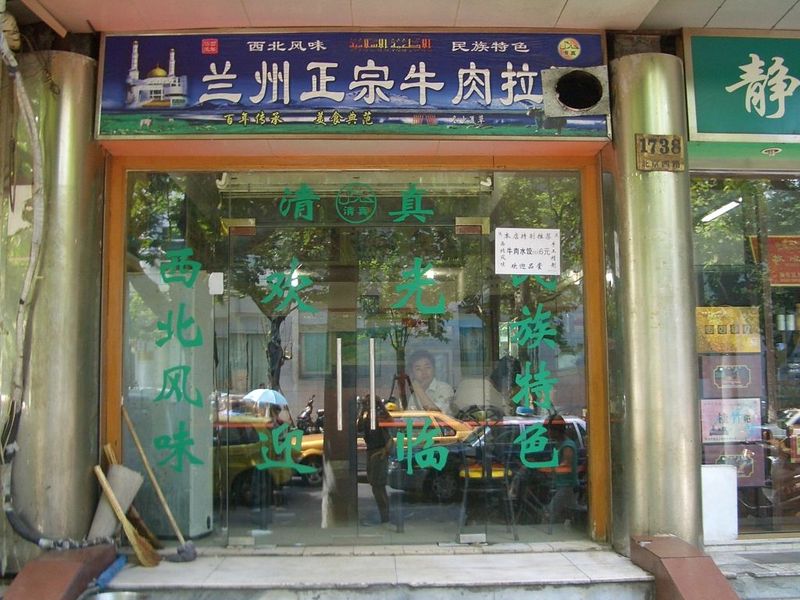
The success of Lanzhou lamian is full of the sweat and efforts of the Qinghai people, and cannot be separated from the support of local policies. As long as they are ready to start a lamian business, Hualong people can get another loan of 30,000 to 50,000 RMB without collateral, with the interest paid by the county government for the first year. Such a policy has been going on for more than 20 years.
In 1999, Lanzhou lamian was identified by the state as one of the three major Chinese fast food pilot promotion varieties, and was known as “the first Chinese noodle”, which also won the praise of diners nationwide and even worldwide.
According to relevant data, there are more than 400,000 noodle restaurants in China, of which Lanzhou lamian occupies half. From this, it can be deduced that more than 500,000 people in China alone make their living by Lanzhou lamian. In the world, nowadays, more than 40 countries and regions, such as Japan, Canada and Singapore, also have more than 100 Lanzhou lamian restaurants.
The secret of delicious Lanzhou lamian
Lanzhou lamian is born from Lanzhou Beef Noodle, and also inherits the standard of “first the clear, second the white, third the red, forth the green and fifth the yellow”.
First the clear, refers to the noodle soup of beef noodle clear and transparent.Second the white, refers to the color of the radish slices white and crystal. Third the red, is the red bright spicy chili oil, forth the green, is the cilantro, garlic and other side dishes of bright green color. Fifth the yellow, refers to the yellow color of the noodles, and the powerful mouthfeel. Only when these five criteria are met can a bowl of qualified Lanzhou lamian be considered.
Selected ingredients
To make a delicious bowl of Lanzhou lamian, quality raw materials are essential. It is said that the most authentic Lanzhou lamian should have at least three kinds of raw materials: Gannan’s Yak meat, Yongdeng’s noodles and Gangu’s chili.
Gannan Tibetan Autonomous Prefecture has high altitudes and natural pasture without pollution. Gannan yak has thick and short limbs, is hardy, and the yak meat is bright red, tender, high in protein, low in fat, rich in nutrition, tasty and pure. Add the right amount of herb nuts, cinnamon, cloves, fennel, ginger, pepper and other seasoning stew, the soup taste very pure and delicious.
Lanzhou Yongdeng County’s excellent wheat seeds “monk’s head” milled into the flour gluten value is high, white with a slight yellow color. The noodles made with this flour are slightly crispy, fragrant and have a powerful mouthfeel. When the noodles are soaked in the soup, the noodles are firm and the soup is not cloudy.
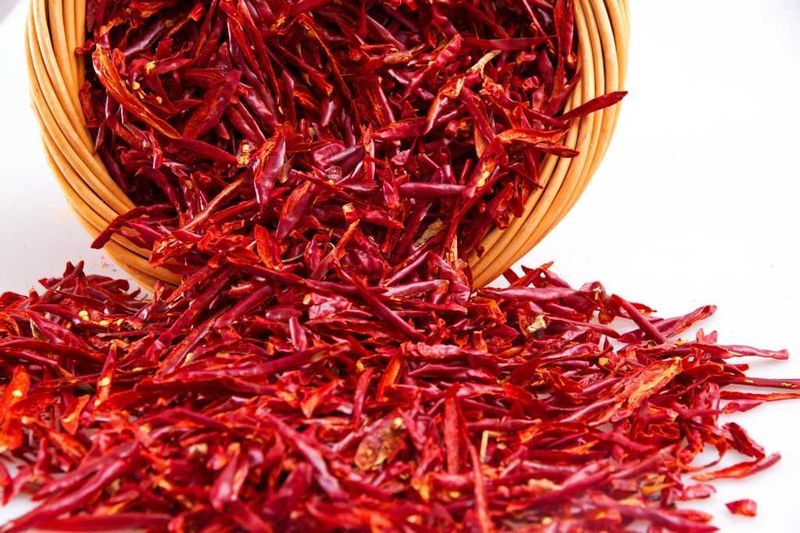
There is a kind of thin and long chili pepper produced in Gangu County, Gansu Province. After being dried, the chili pepper is pressed and ground into chili powder with oil, spicy and fragrant taste, and made into spicy oil with pure spicy flavor and bright red color.
Eight kinds of noodles and a bowl of soup-stock
The core of Lanzhou lamian is naturally the noodles. To make a bowl of authentic and delicious Lanzhou lamian, the noodles alone need to go through five processes: selecting the ingredients, mixing the flour, waking the flour, Liutiao (by repeatedly kneading the noodles, wrestling and other operations to enhance the taste of the noodles) and pulling the noodles. Among them, just the kneading would take one hour.
If you come to an authentic Lanzhou lamian restaurant for dinner, you will find an interesting phenomenon, when ordering the waiter will ask you which kind of noodles you want. Is there so much to be said about eating a bowl of noodles? Yes, authentic Lanzhou lamian restaurants may offer up to 8 different types of noodles to meet the preferences of different diners.
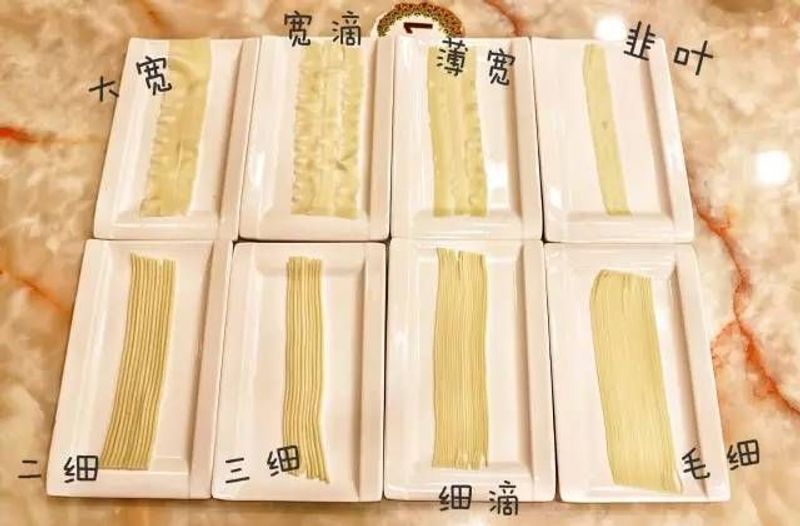
These eight kinds of noodles are divided into two categories: flat noodles and round noodles. The flat noodles are divided into Dakuan, Kuandi, Jiuye and Bokuan according to width to narrow; the round noodles are divided into Erxi, Sanxi, Xidi and Maoxi according to coarse to fine. When comparing the size, a “Dakuan” is about 100 times larger than a “Maoxi”.
The beef soup in Lanzhou lamian is also one of the essences, and authentic beef lamian is made using an ancient method that has a history of 100 years. The chefs use hundreds of pounds of fresh beef just to cook the soup every day, and add more than ten kinds of condiments such as local chicken and lamb liver to slowly stew in the process. Such a pot of beef soup takes 8 hours to cook, and it comes out clear and has the aroma of beef.
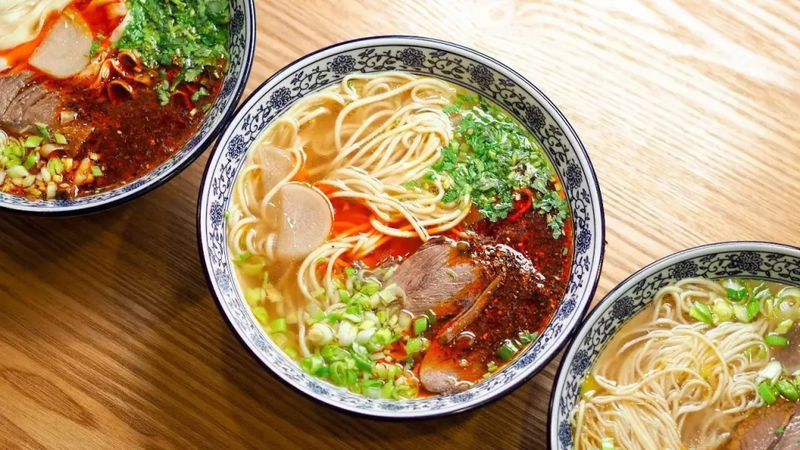
There is a saying in Lanzhou, “noodles do not out the city, meat does not enter the city”, meaning that good beef noodles are in Lanzhou city, Lanzhou beef noodles out of Lanzhou will not have that taste. Although there are now Lanzhou lamian restaurants in China and even around the world, the differences in soil and water in different places will more or less cause changes in the composition of various main ingredients and auxiliary ingredients, and the taste will be different.
Therefore, I’m afraid that the only way to get the most authentic Lanzhou lamian, or Lanzhou beef noodle, is to travel to the area yourself.
Chinese Lamian vs Japanese Ramen
As many of you may have noticed, there is also a popular type of food in Japan called ramen. It is pronounced the same way as Chinese lamian in Chinese. In fact, Japanese ramen has a certain origin with Chinese lamian, which is described in three ways.
The first theory is that the Japanese word “拉麺” comes from the Chinese word “拉面” (Written as “拉麺” in traditional Chinese), which is also known as Lanzhou lamian. Lamian is made mainly by stretching, unlike the traditional Japanese soba and udon noodles, which are cut into long, thin shapes with a kitchen knive. This type of stretching noodles, together with “桿麺”, became the prototype of Japanese ramen. “桿麺” is a Japanese food in which the dough is stretched, folded in layers, and cut into thin strips with a knife.
The second theory is that the word “拉麺” comes from the Chinese word “老麺”, and in some dictionaries in the ramen entry “拉麺” is also expressed by the Chinese word “老麺”.
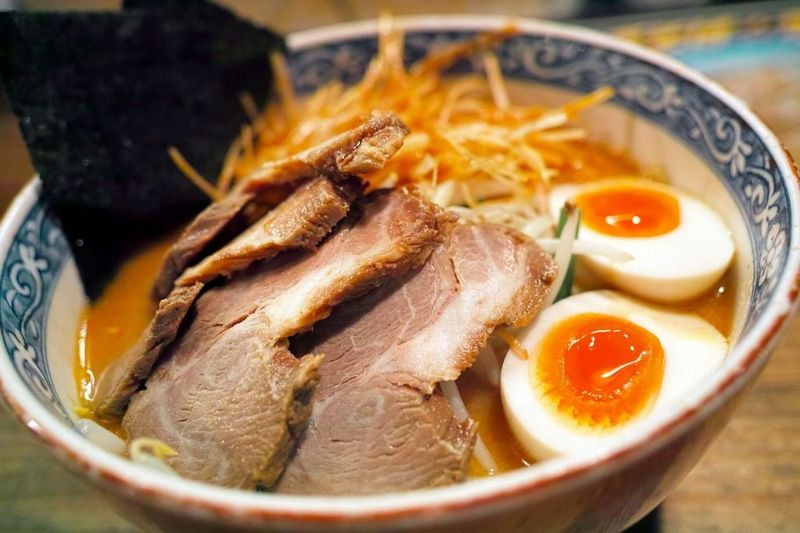
The third theory is that it originated in 1922 in Sapporo, Hokkaido, in a small restaurant called “Takeya”, which later also served Chinese cuisine. Because of the accent of the Chinese chef in the kitchen announcing loudly that the dish was ready, which pronounced “hao la”, it impressed the owner’s wife so much that she called the food ramen.
By the end of World War II, rice was scarce in Japan, and most of the relief food given by the United States was flour. Japanese people are not very good at noodle dishes. As a result, ramen became one of the most popular noodle foods, and then it became popular throughout Japan.
No matter which statement is true, I am afraid that Japanese ramen is inseparable from Chinese lamian.
Other Cuisines
There are actually many other cuisines in China that are similar to Lanzhou lamian, and although they have place names in their names, they are not local specialties. This article will list a few of them for you.
Hangzhou Xiaolongbao
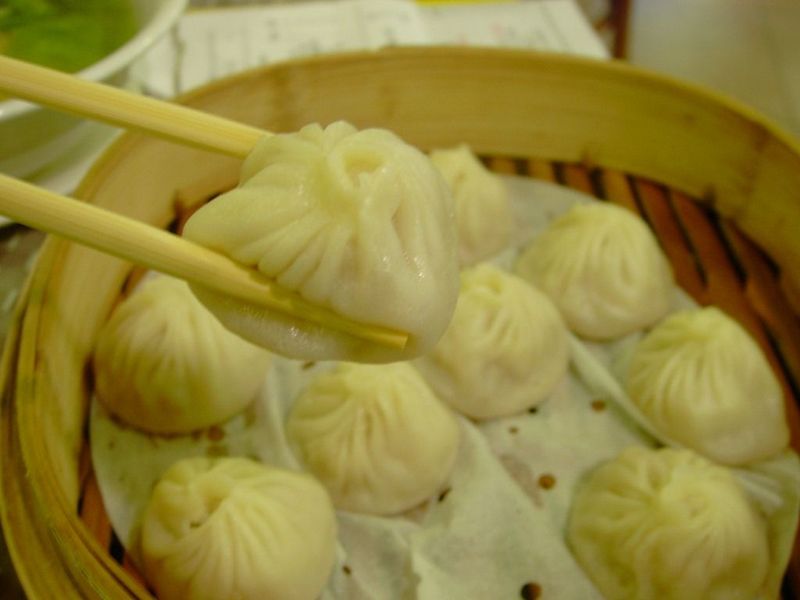
When it comes to Hangzhou’s famous dishes, people often think of xiaolongbao at first, and it is even recommended in many travel guides.
However, Hangzhou xiaolongbao is not a traditional local dish, but was brought to us by many caterers from Shengzhou. The main reason why it is called Hangzhou xiaolongbao is because the word “嵊” is not easy to read and remember. Even most Chinese people, I’m afraid, have to check the dictionary to confirm the pronunciation of the word.
Hainanese chicken rice
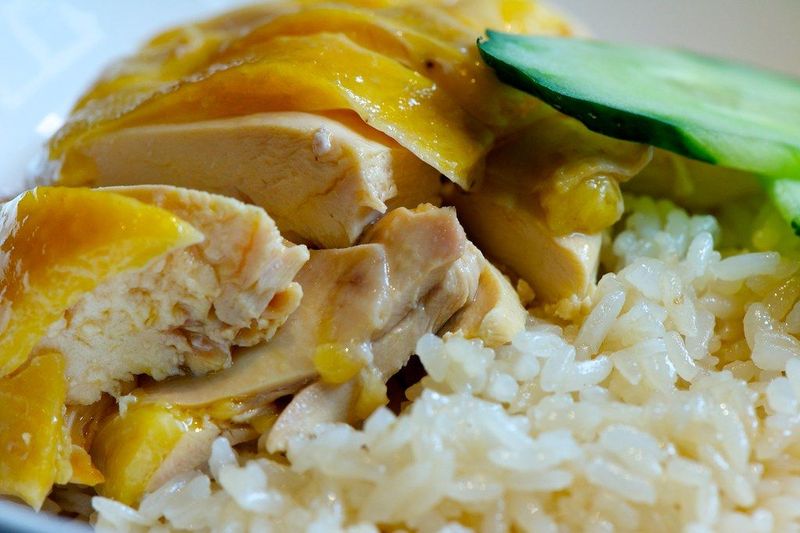
Although it is called Hainanese chicken rice, this dish is actually the national dish of Singapore. In the beginning, it was brought to Southeast Asia by a Chinese man of Hainanese ancestry and made it famous, hence the name.
Interestingly, some of the Hainan people returning home from Southeast Asian countries want to eat it in their hometown only to find out that Hainan does not have this delicacy locally.
Chongqing Chicken Pot
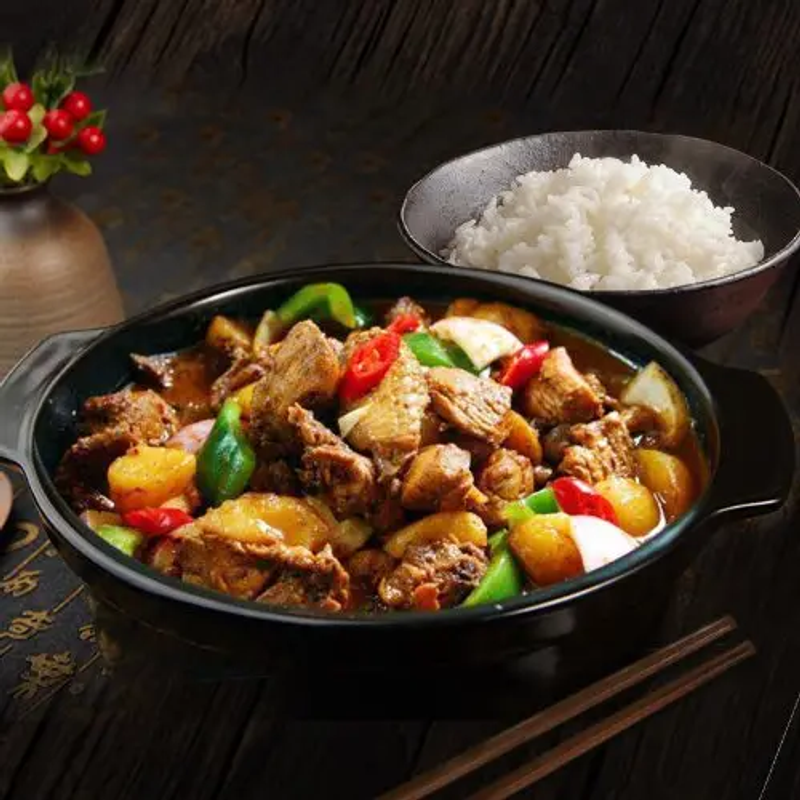
This dish is an innovation of a catering company that combines the local cooking techniques of Chongqing. However, after it was made, they found that it did not quite meet the local taste of Chongqing, but was loved by consumers in other regions.
Many Chongqing people have never even heard of this dish before, and friends who want to eat authentic Chongqing chicken pot do not have to make a special trip to Chongqing. After all, it is not a traditional dish, but an innovative food.
That’s it for Lanzhou lamian. If we have the chance, we may introduce more delicious and interesting Chinese food for you in the future.
- Author:NotionNext
- URL:https://pandayoo.com/2022/03/24/lanzhou-lamian-the-chinese-fast-food-that-doesnt-come-from-lanzhou
- Copyright:All articles in this blog, except for special statements, adopt BY-NC-SA agreement. Please indicate the source!